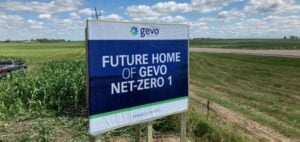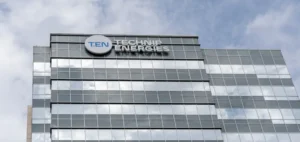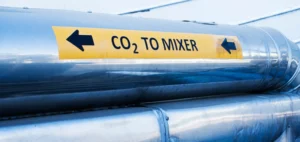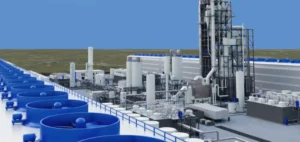In the vicinity of Manila, a coal-fired power plant hopes to become a model for developing countries striving to abandon this polluting fossil fuel. An alliance led by the Rockefeller Foundation, a philanthropic group, plans to help close this plant ten years earlier than scheduled, avoiding millions of tons of emissions by monetizing them as carbon credits.
“The idea is ‘pretty simple’,” explains Joseph Curtin, general director of Rockefeller’s energy and climate team, to AFP. “What if, instead of selling this high-carbon energy to the electrical grid, the coal owner could sell the avoided carbon emissions?”
Essentially, carbon credits allow a polluter to “offset” their own emissions by paying for “avoided” emissions elsewhere. They have been used to fund a large number of initiatives, from electric buses to protected forests, although it later emerged that many projects overestimated or incorrectly calculated the avoided emissions.
According to the International Energy Agency (IEA), coal is the leading source of human-induced carbon dioxide emissions. Some developed countries have gradually phased it out. However, it remains a cheap and reliable resource for developing economies facing growing energy demand.
Reluctance to Give Up Coal
Countries like Indonesia and South Africa have been offered billions of dollars to prematurely close coal-fired power plants. Without much success so far. “There isn’t a single coal-fired power plant, out of the 4,500 in emerging markets and developing countries, that has been closed and replaced with clean electricity,” regrets Mr. Curtin.
Because the problem is more complex than it seems. Not only is coal an affordable and reliable energy source, but it also represents millions of direct and indirect jobs. In Asia, power plants are often recent, meaning years of lost revenue in case of premature closure.
“There simply isn’t an economically viable exit strategy for the owners of these assets,” notes Mr. Curtin.
“Coal to Clean Credit Initiative” (CCCI)
This is where the “Coal to Clean Credit Initiative” (CCCI, “Initiative du charbon au crédit propre”) comes in. A program that aims to cover both the cost of closing coal-fired power plants and converting them to renewable energy production, notably wind and solar, by generating carbon credits.
With a pilot project: the South Luzon Thermal Energy Corporation (SLTEC) in the Philippines. This coal-fired plant is scheduled to operate until 2040. But under the CCCI, it would close ten years early, which would avoid 19 million tons of CO₂ emissions, according to the Rockefeller Foundation.
The plant would be replaced by a mix of renewable energy production and battery storage, and workers and the local community would be compensated.
Criticism and Challenges
However, the idea is subject to criticism, especially after the revelation of problems related to other carbon credit projects. A recurring issue: proving that emissions would not have been avoided anyway. This has hindered numerous forest protection programs, where promoters have failed to demonstrate that wooded areas were actually at risk of being cut down.
Elsewhere, trees meant to be protected were cut down while credits had already been sold to protect them. As renewable energies become cheaper, some argue that, carbon credits aside, market forces alone will eventually kill coal-fired power plants.
Future Perspectives
“It is difficult to know what forces are pushing for or against the gradual elimination of coal,” says Gilles Dufrasne from the think tank Carbon Market Watch. “These economic and political forces can change significantly,” he told AFP. According to him, carbon credits risk becoming a way to “reward investors who have placed their money in a highly polluting and doomed technology.”
Other analyses warn against the temptation for some countries to “double count” emission reductions related to coal plant closures, by including them in their national calculations even if these reductions have already been sold as carbon credits to offset emissions elsewhere. According to Mr. Curtin, the CCCI methodology is designed to avoid these pitfalls.
Only solvable coal-fired power plants, covered by long-term agreements and connected to the grid are eligible. Participating companies must permanently renounce coal and closures must be accompanied by a conversion to renewable energies and support for populations.
“And if someone has a better idea, let them share it with us,” assures Mr. Curtin. “Because we are constantly seeking new ways to address this problem.”






















